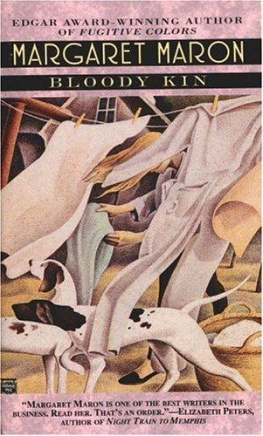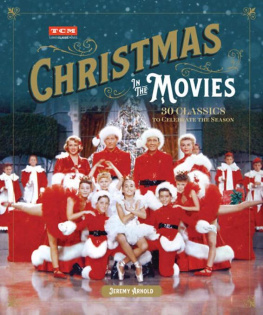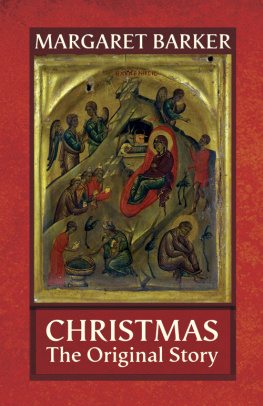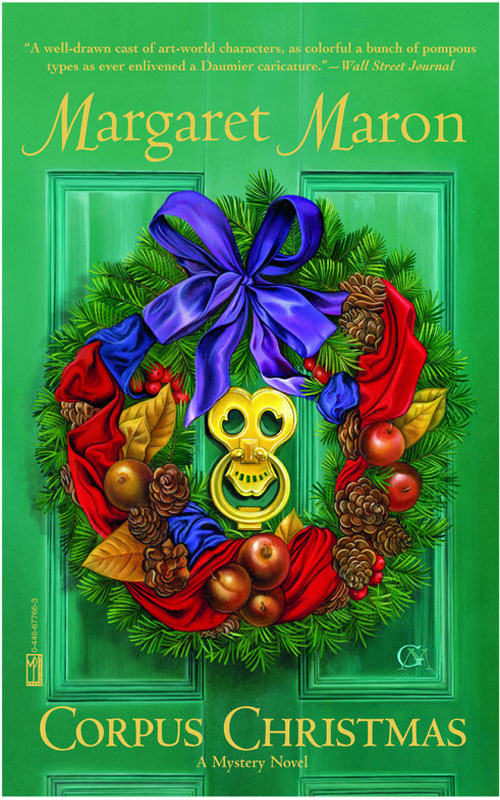This book is a work of fiction. Names, characters, places, and incidents are the product of the authors imagination or are used fictitiously. Any resemblance to actual events, locales, or persons, living or dead, is coincidental.
WARNER BOOKS EDITION
Copyright 1989 by Margaret Maron
All rights reserved.
Mysterious Press books are published by Warner Books, Inc.,
Hachette Book Group
237 Park Avenue
New York, NY 10017
Visit our Web site at www.HachetteBookGroup.com.
www.twitter.com/grandcentralpub
First eBook Edition: May 2009
ISBN: 978-0-446-55751-1
THE CRITICS COME BEARING RAVES FOR CORPUS CHRISTMAS AND MARGARET MARON
One of the fields sharpest writers. Her spare, elegant prose and flair for characterization are showcased in CORPUS CHRISTMAS. A fine read.
Greensboro News & Record
A Christmas gift for mystery fans, as full of surprises and as satisfying as a rich holiday dessert.
Southern Pines Pilot (NC)
Impressive strongest on characterization and atmosphere.
Ellery Queens Mystery Magazine
Maron writes with wit and sophistication.
USA Today
There is no one who delivers more pure enjoyment than Margaret Maron.
San Diego Union-Tribune
Her characters spring to life.
Boston Globe
No writer is better at conveying a sense of place than Maron.
Cleveland Plain Dealer
By Margaret Maron
DEBORAH KNOTT NOVELS
Storm Track
Home Fires
Killer Market
Up Jumps the Devil
Shooting at Loons
Southern Discomfort
Bootleggers Daughter
SIGRID HARALD NOVELS
Fugitive Colors
Past Imperfect
Corpus Christmas
Baby Doll Games
The Right Jack
Bloody Kin
Death in Blue Folders
Death of a Butterfly
One Coffee With
SHORT STORY COLLECTION
Shoveling Smoke
Erich Breul House.Built ca. 1868, modernized for Erich Breul and his Swiss bride by architect Theodet Stanford in 1886. Impressive use of native Vermont marbles. Interesting, if uneven, collection of late 19th-century American and European art. Also, authentic late-Victorian furnishings that will overwhelm your senses. Contribution suggested. Open TuF 10 A.M.5:30 P.M., Sa 10 A.M.1 P.M. 7 Sussex Sq. 212/555-3378.
Excerpted from Slicing the Big Apple
A Pocket Guide to New York City 1989.
I N THE MID-1820S ERICH BREULS GRANDFATHER parlayed three leaky river barges and the opening of the Erie Canal into a modest fortune. During the Civil War, Erich Breuls father added a second fortune running blockades. Erich Breul himself was the first of his family to be sent to Harvardprimarily to learn the art of managing money and his postgraduate trip to Europe was meant to complete the familys transformation from flannel cap to silk hat in three generations.
Like many young scions whose lives were destined for the administration of settled wealth, Erich had developed a taste for fine art during his college years and Europe provided an ideal opportunity to pursue that interest.
To the elder Breuls dismay, young Erichs proposed year stretched to eight. Fortunately, Mr. Breul was healthy and vigorous at the time and he was prepared, within reason, to indulge his sons acquisition of culture. Times were changing and Mr. Breul was shrewd enough to change, too.
In Europe Erich immediately grasped what his freebooter father only dimly sensed: Culture could purify and legitimize the crude and occasionally bloody foundations that too often underlay even modest financial empires.
Yet it was more than that.
Young Erich Breul genuinely liked pictures and he made a substantial effort to cultivate an eye for adventurous art, especially since his allowance did not stretch to safely pedigreed old masters. He disdained the stuffy salon painters and also avoided the impressionists, thinking them too superficial. Instead, he was instinctively attracted by that mixture of dignity and daring found in the work of expatriate Americans like Whistler and Sargent. He had his portrait painted that first winter by the young Italian virtuoso, Giovanni Boldini; and although a sympathy for noble sentiment drew him to intimist painters like Tranquillo Cremona and Arcangelo Guidini, his passion for bravura technique led him as far afield as Adolphe Monticelli.
In later years he liked to think he would have bought a Van Gogh had he seen that artists work.
For eight years, crates of pictures arrived on the piers of New York with predictable regularity. A bewildered Mr. Breul paid the freight. He might not understand his sons preoccupation with collecting art but he continued to underwrite the expense since young Erich had, while collecting Ferdinand Hodler in Switzerland, also collected Fraulein Sophie Frst, a distant cousin with a sizable dowry and trim ankles that flashed beneath her proper skirts.
When the newlyweds finally followed their treasures to America in 1887, Mr. Breul established them at 7 Sussex Square. Sophie decorated with late-Victorian opulence and Erich turned the cavernous ballroom into a personal art gallery.
As was the fashion in those days, pictures were hung in the salon style popular in Europe. In frames monumentally carved and gilded, they were stacked on the walls from chair rail to ceiling, one above the other, with little consideration for size or shape and with almost no space between each frame.
The collection spilled into the formal drawing room, leaped the great hall to the library and dining room, and still continued to grow: George Inness; Henry Creswell; William Carver Ewing; and Walter Sickert, a student of Whistlers with whom Erich had caroused in London before his marriage to Sophie. Almost by accident he acquired a decent Chandler Grooms and a better than average John La Farge.
Old Mr. Breul thought it a deplorable waste of money but he loved his son and for Christmas one year even gave him a set of Winslow Homers marine drawings which had caught his eye and reminded him of his blockade-running days.
Despite Erich Breuls continued passion for pictures, he did not disappoint his fathers hopes once he was home. He may have lacked his grandfathers gritty pioneer spirit and his fathers ruthless zest and acumen but he eventually shaped himself into a dutiful businessman and, after the crash of 1893, even managed to recoup most of the losses.
Only one child was born of his happy union with Sophie Frst. In due time Erich junior grew to manhood, attended Harvard like his father, and departed for his own wander jahr in Europe, where he was struck and killed by a team of runaway horses in a narrow Paris street two days before his twenty-second birthday.
Three months later, still dazed by his death, Sophie stumbled in front of the electric trolley that ran along the bottom of Sussex Square.
When his sons effects arrived from Europe, Erich Breul was touched to find a few crude pictures in his steamer trunks. It didnt matter that the pictures were dreadful Erich could remember some mistakes he himself had made when he first began collectingthe tragedy was that the boys life had been cut short before his eye could mature.
Heartbroken, hed stored his sons possessions next to the trunk that held his memorial to Sophie: her nightdress, her autograph album, a lace handkerchief that still breathed the faint trace of her toilet water, along with a hundred other intimate bits and scraps that he couldnt bear to give away.











